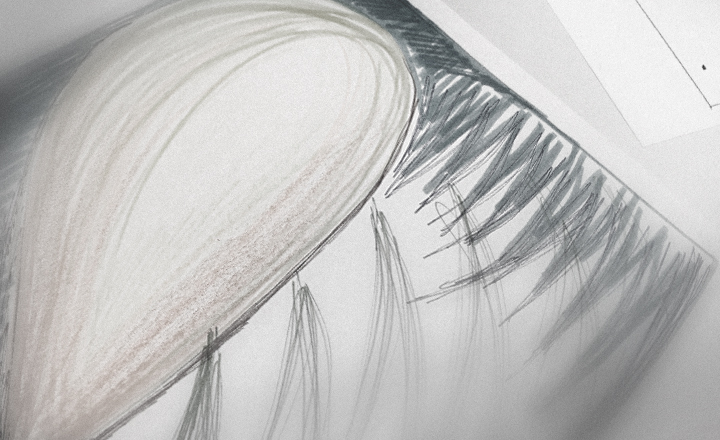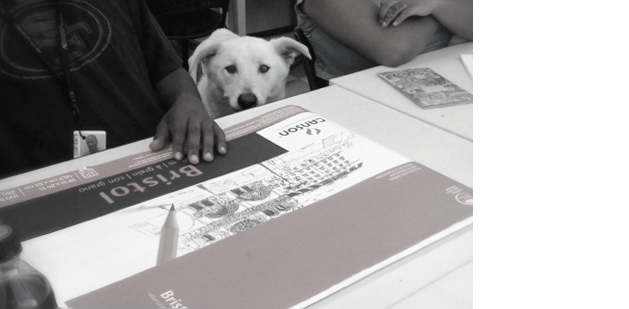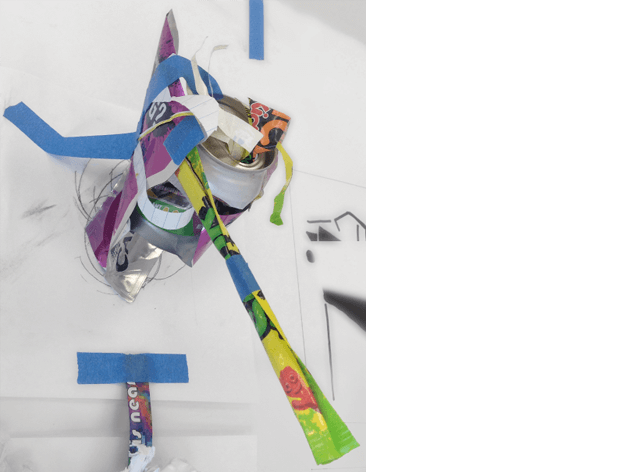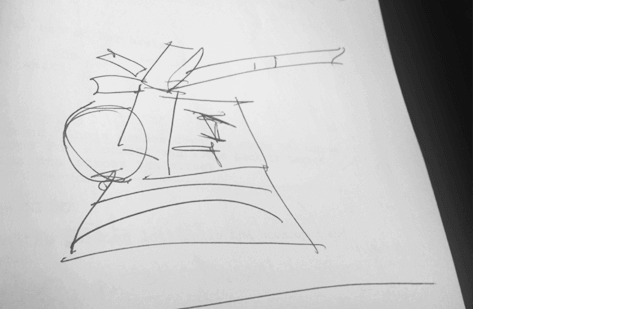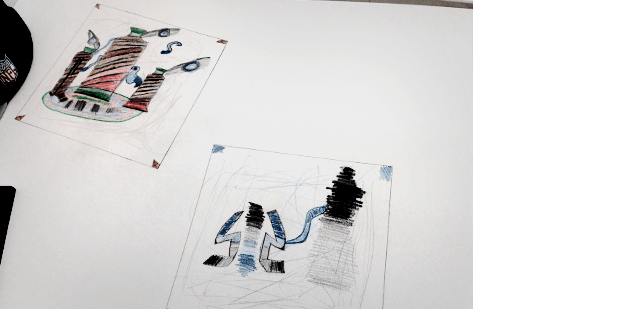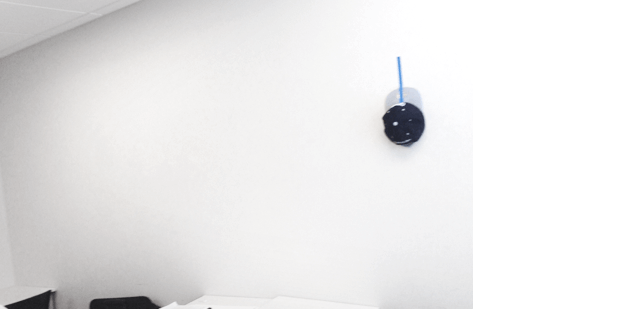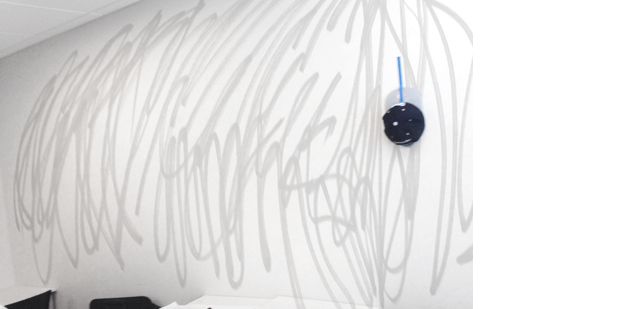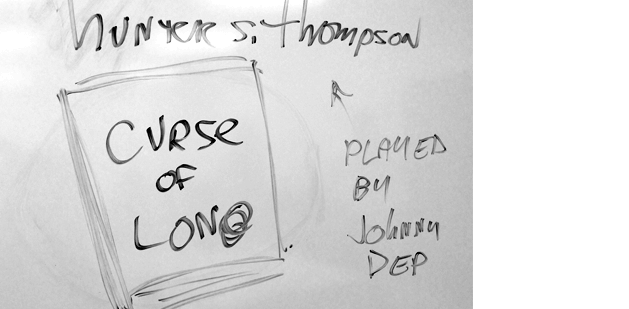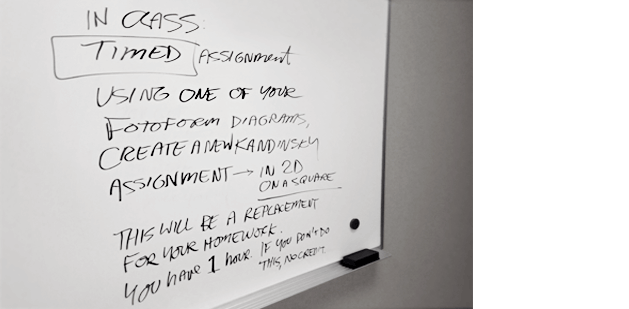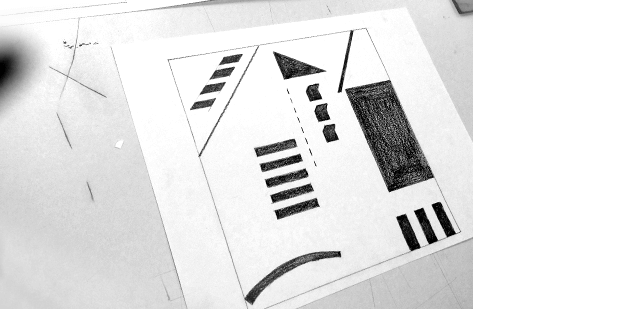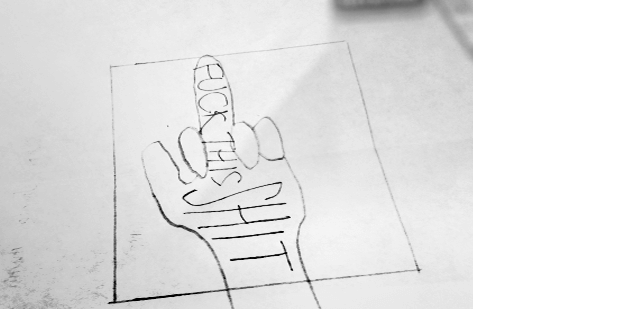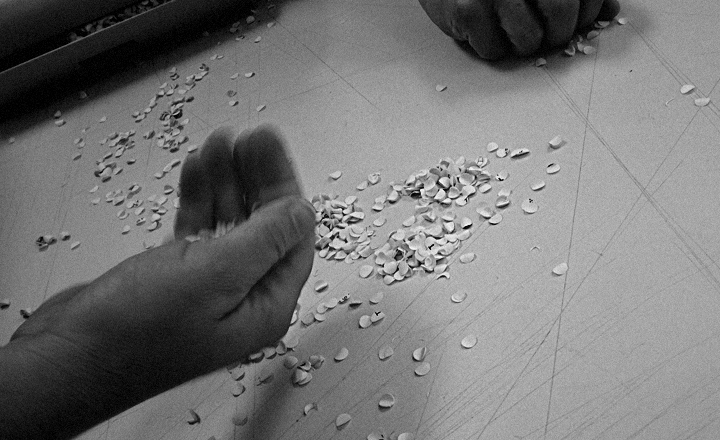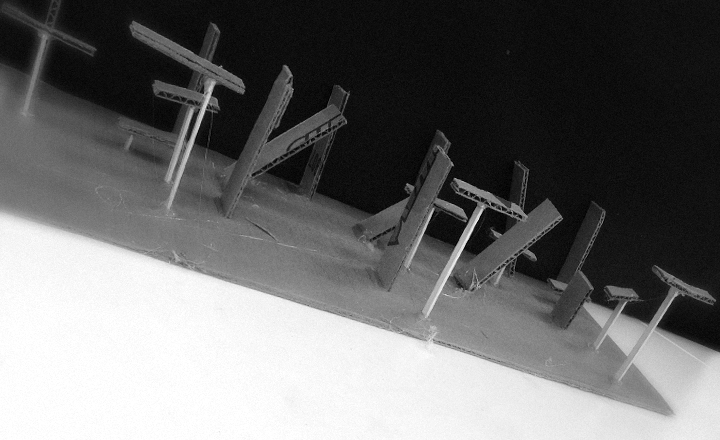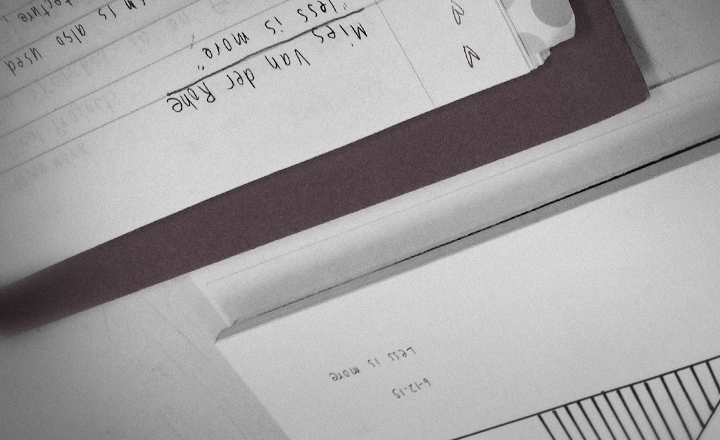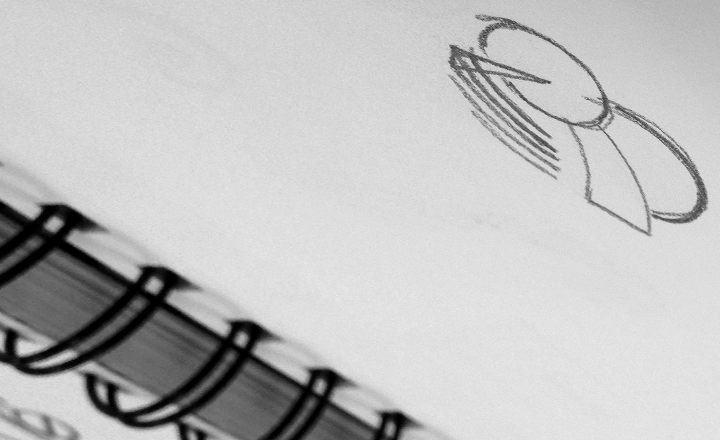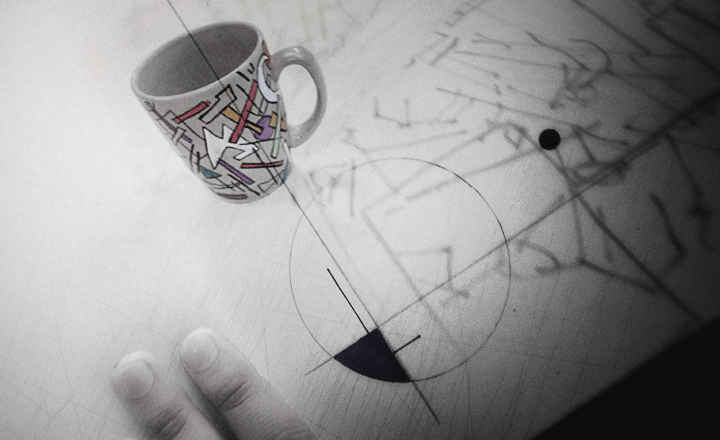‘I feel like I did it wrong.’
Class six starts with three students; three show up much later. Just enough that I’ve decided to start giving away industry secrets to those who are in class on time. I’m typically cool with students (or myself) being a little late, I use loosely the 15 minute rule (traffic is a bitch for early classes); but now we’re getting kids showing up an hour to two hours late. And we’re discussing a lot.
One student ‘ate bad chicken’ and is absent, other absences just happen; then ‘my mother threw my homework away.’
We have (yet) another discussion about families who get in the way of students in art school. So does mass transit, car trouble, jury duty, germs, dentists, friends at airports, divorce, and getting inked. ALL get in the way of art school. Even other art school classes (taught by people named ‘Adrian’) get in the way of art school. So much to deal with!
Once we get the whining out of the way – and we have a service dog in class, so when I mention whining, the dog takes note.
‘It IS whining, right?’ They agree. We move on fast to actually talk about the work. And here’s another Kandinsky playlist (what the students were listening to while homeworking):
‘Why are you listening to this??’
–gran’ma
family matters
Slipknot + service dog walking on her homework + gran’mother questioning whatever the hell is her homework: ‘Well, I know art and that’s not art!’ – leads to these constructions (below). Another student points out that the blue painter’s tape becomes part of the structure, so does the printed elements and colours on the found items.
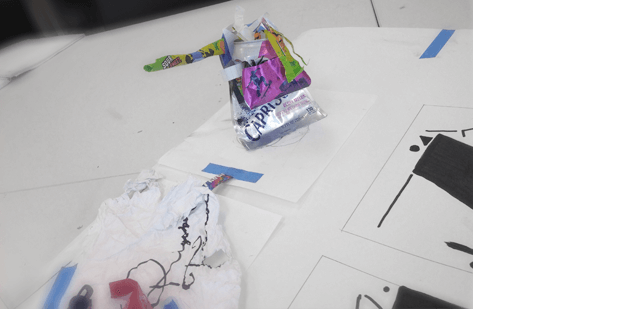
As a group we critique the elements of her piece, breaking it out. We pay a lot of attention to her constructs applying POINT LINE PLANE, tho her geometric studies don’t match, they just mimic the FOOTPRINT of the constructs.
As continue our analysis, we notice extra random things added to the top of the can – and note that her instincts are taking her into decoration over good FORM:
Humans have an instinct to decorate – just as we have an instinct to put things in order (see next critique). In our conversation, I compare her work to the Victorians cause I can: they LOVED to decorate. Apply ornament and decoration to everything!
Then I compare the Victorians to Miley Cyrus. Cause she’s pretty much doing what they were doing. Decorating everything:
‘They say money can’t buy happiness and it’s totally true. Money can buy you a bunch of shit to glue to a bunch of other shit that will make you happy, but besides that, there’s no more happiness. There’s no point in me focusing on getting any fucking richer. Obviously the shit you buy doesn’t make you happier because I’m sitting here gluing a bunch of junk to stuff.’
–Miley Cyrus

‘PRICELESS. 2 chainz face checkin out the #dirtyhippie dildo’
(Then she did do something good. Started a Foundation for Homeless and LGBT Youth.)
But, back to class:
I do a quick sketch of we’re discussing about the student’s CHAOS pieces – just to show the construction of one of them. She sort of gets it, but that’s the problem (typically) at this point in the course. Students have the materials, but often don’t see the connection between what they’re doing and what they’re learning.
Today’s critiques tend to shore some of this up.
better, better
The next student has moved forward from his framed piece last week, but still is framing things by placing boxes in the corner. And his FOTOFORM builds don’t seem to match his constructs (now flat, cause mom threw his work out). Also: his WHITE SPACE (Negative Space) is now filled with scribbles …
He’s avoiding WHITE SPACE. And just letting the area go BLANK is really throwing him … So I grab his hat and place it on the wall. With tape:
And we break it out:
POINT is the cap itself and the elements sewn on;
LINE is the blue tape ;
PLANE is the brim + tape, and can also be the surfaces of the cap.
As a group we describe how the cap STANDS OUT on the wall because of the WHITE SPACE – AND the blue tape works as an arrow, works to direct one’s eye to the cap.
I add, Imagine the wall with gray scribbles all over it, drawn with a marker pen. ‘Would the cap stand out as much?’
They seem to get it, but I’m going to keep hammering on WHITE SPACE, as will other instructors at this school.
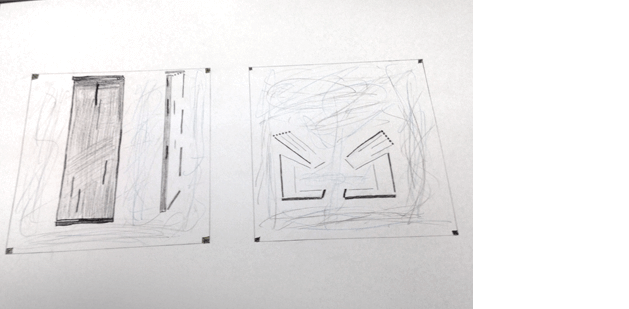
I then point out there’s some interesting ideas in his FOTOFORM studies. He says, ‘I want another chance.’
gets it
Waldorf nails it – again. Discovers the art of working hard, then calmly creating good in the second version:
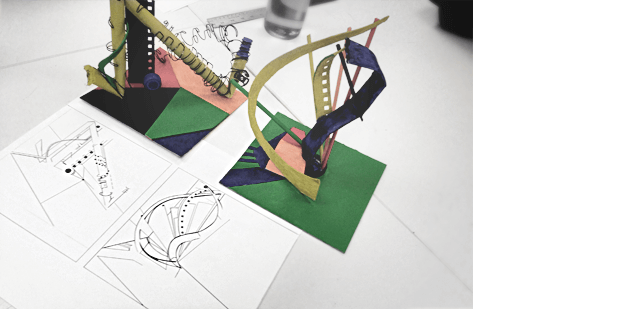
Time spent on first piece (at right): Four hours, mood music is System of a Down and Eminem
Second piece: (at left) 20 minutes, music by Jason Grey
We discuss at length that the 20 minute piece probably wouldn’t have existed if she didn’t agonize over the first study.
working creative: a slapdash chart
‘I have already secured the compound: Two homes with a 50-meter pool on the edge of the sea on Alli Drive in Kona, where the sun always shines.’
–H.S.T.
This leads to a diagram I cover in most of my classes. Usually draw it on the board really quickly, sometimes I morph it into a complete design process, adapting as necessary. To start, I reference Hunter S. Thompson’s plan to WIN the 1980 Honolulu Marathon – from The Curse of Lono. (And H.S.T. is a great trubblemaker to introduce to creative students) (Welll, sometimes)
It’s a simple plan. No trickery, no cars, no mopeds (mopeds were big in 1980).
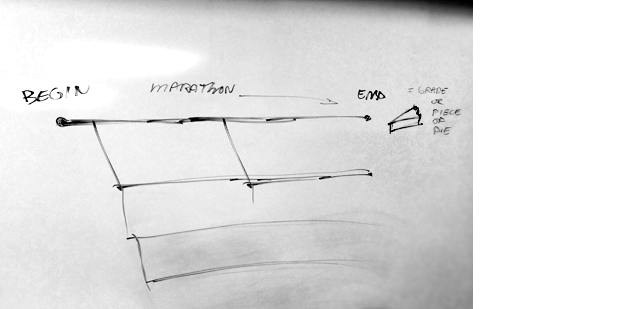
TO WIN THE HONOLULU MARATHON,
all one has to do is
simply run the ENTIRE MARATHON at TOP SPEED to the END.
’Cause no one has ever done it.
Students say it’s impossible to run a marathon like that, ‘You’d get tired or DIE!’ is the consensus.
I ask, ‘Then why do so many of my students work like this?’
After some grumbling, I hear, ‘As a teacher I now hate you.’
‘Why?’
‘Because this makes total sense.’
I talk about the rewards to finishing fast without thinking about what you’re doing – is a LETTER GRADE or a slice of PIE (I always throw the PIE in. ’Cause PIE is good).
‘Are you really here – at an expensive school – to just get a GRADE or a slice of PIE?’
One can get pie at McDonalds. They’re a lot cheaper.
What REALLY IS the fun part? Finishing – eating PIE – or going through the creative process?
Eventually, we decide it IS the process. Anyone can get PIE – go to NATIONS.
And (using a Back to the Future reference, I’ve created alternate timelines on my chart, in that each line represents OTHER options to solve the design problem) …
‘These other pieces you create will NEVER exist if you don’t try other options! NEVER EXIST, MARTY! We can’t let BIFF win!’

Doc Brown from Back to the Future Part II
© 1989 Universal City Studios, Inc.
(My Doc Brown impersonation is getting better)
shatner
I also explain a concept that comes up again and again in my classes. THE SHATNER MOMENT. And how this can lead to good design. It’s not very easy to explain, and helps if there’s a Trekkie in the class (and I do get to hone my SHATNER impersonation).
To start: The Wrath of Khan – prior to the reboot movies – was the best film in the Star Trek series. One reason is WILLIAM SHATNER’s performance is actually quite good. And it’s cause director Nicholas Meyer knew that SHATNER tends to overact; which may be related to his Shakespearian training – which emphases projecting on a stage, doesn’t always play well on film or tee vee – tho probably his staccato performances may also just be ’cause he’s sort of nuts.
So when they shot the film, SHATNER ended up doing multiple, MULTIPLE takes. OVER and OVER and OVER. And eventually he’d relax and give a good performance. And they used those cuts in the final film.
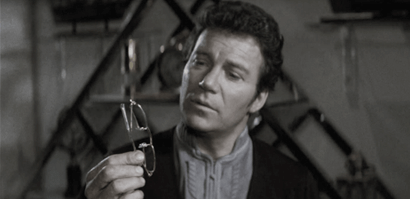
James T. Kirk from Star Trek II: The Wrath of Khan
© 1983 Paramount Pictures Corporation
Same thing works with design. It’s like a Chinese finger trap – once stress, ego and fear gets pushed aside – one may end up doing their best work.
When I see it – especially in my beginning typography course – I call it THE SHATNER MOMENT.
built landscape
The last student (with work) this morning ended up building a large construct based on Kandinsky’s early landscapes:
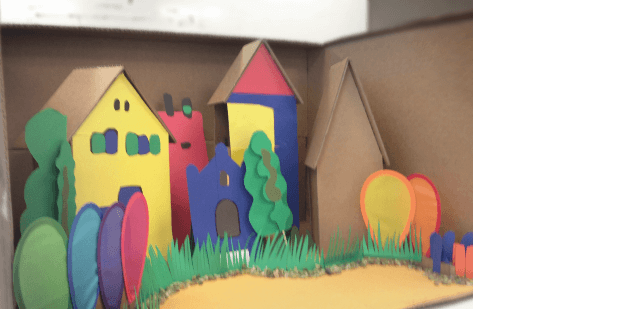
From this build, her take on POINT, LINE and PLANE (image up top) lead her somewhere else. And this is good because …
the challenge!
I do a lot of in-class challenges. Another classroom idea from Project Runway. Projects are done quickly and there’s a limited time element. And curve balls, hafta throw in something unexpected. And I get to sound like Timm Gunnn! As a result, Students don’t have time to worry, fret, leave the room, call friends, argue with gran’ma or do Adrian’s work.
In some classes I do challenges that are three hours, in some, ten minutes. Today is a ‘redo’ your homework challenge. And they have ONE HOUR.
The catch? This challenge replaces your homework. If you don’t do it, no credit, for anything.
‘DESIGNERS! you have one hour. Go.’
The I’ll Decide What Homework student doesn’t have homework (again). And isn’t very happy that he has to do this project – because he doesn’t have the POINT LINE PLANE component done at all. ‘You’re in college, come up with something. Clock’s running.’
(I often do in-class challenges where students have to have their homework done or they can’t do the next part of the assignment. It’s a good time to introduce this.)
They get to work. For ambiance, I put on:
FLOMMISCHEN número 70
« ascendente de spectre »
16 tracks [1hr 12 min]
And I leave because they really are on their own. And a lurking teacher gets in the way.
one hour later
As I’m heading back to class, I’ll Decide What Homework runs past me and says (in a flustered voice), ‘I’ll be right back …’
I call TIME right on the hour.
And the work is good. It seems that they’re finally getting it.
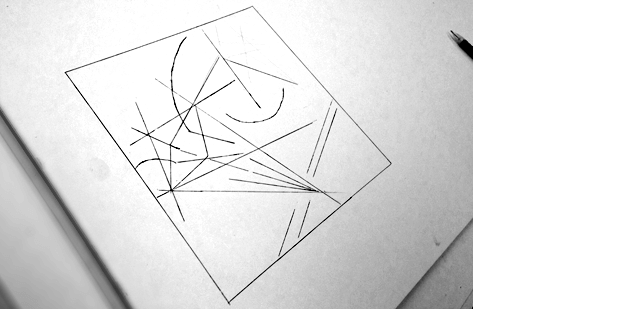
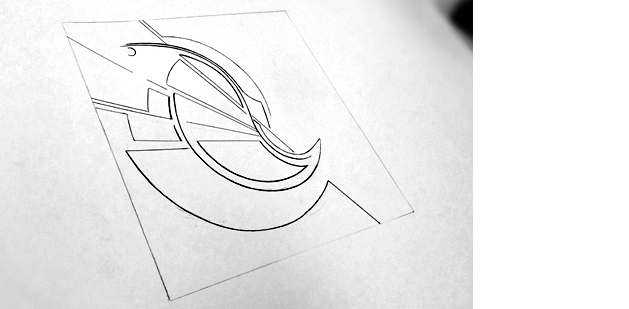
‘Put your pencil DOWN. You’re DONE. Time is up!’
‘But …’
‘STOP erasing! You’re DONE!’
I usually have to say this a few times.
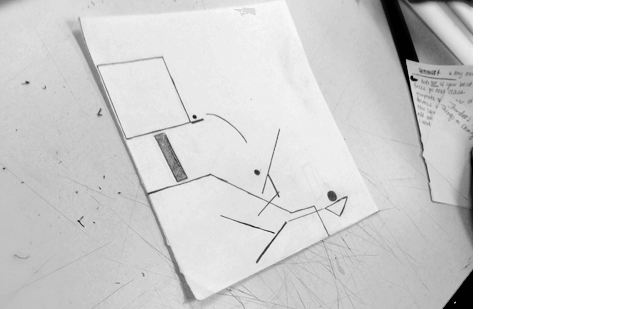
We discuss what just happened. ‘We had NO TIME to second guess what we’re doing.’ And they note there was something in that.
Something different than just doing homework.
Before going on, I decide to wait for I’ll Decide What Homework to return, but I’m told, ‘Oh, he won’t be back.
‘Really. He took his stuff and left. He spent most of the past hour bitching about you.’
I don’t believe it, but he’s gone for the day. He does leave his in-class work though:
Homework:
RESEARCH the work of László Moholy-Nagy (1895–1946)
Just like last time, prepare a presentation for the next class. In your presentation, answer: What did he do at the Bauhaus? And how did he use Trompe-l’œil?
Plus, READ Design Basics Chapter 10, pages 196–201
—steve mehallo
Last year, FLOMM founder Steve Mehallo rebuilt a design fundamentals course into a five week study of theories and work done at The Bauhaus (1919–33). This BAU blog series will document the latest teaching of the course – with lesson plan – Summer 2015 to a group of 8 college students. What’ll happen, who’ll shine, who’ll drop. Names (and some situations) have been changed to protect the innocent as well as the guilty.
co
nti
nue
read
ing —
forward to BAU7 • • •
· · · back to BAU5
PLEASE SUPPORT FLOMM
TIPS + DONATIONS DISCREETLY ACCEPTED






